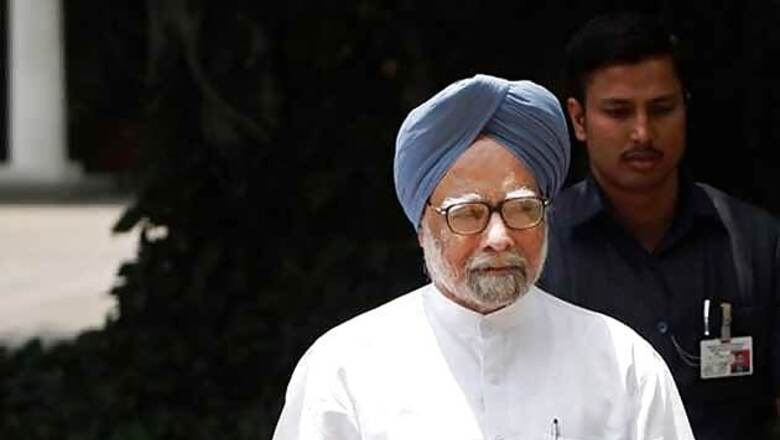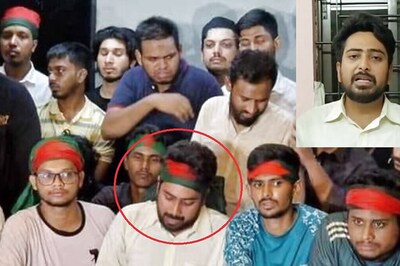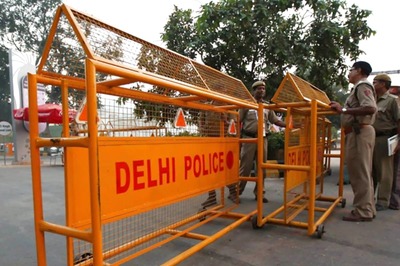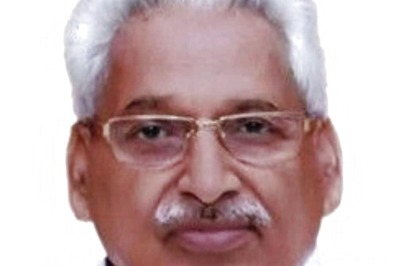
views
New Delhi: Prime Minister Manmohan Singh on Friday reviewed the sharp decline in rupee value and its impact on the economy with RBI Governor D Subbarao and Planning Commission Deputy Chairman Montek Singh Ahluwalia.
Chairman of Prime Minister's Economic Advisory Council (PMEAC) C Rangarajan was also present in the meeting. "We met the Prime Minister. We had discussions on what actions can be taken (to arrest rupee fall). We also discussed about the overall situation of the economy," Rangarajan said.
The meeting comes a day after Subbarao indicated that the central bank could sell dollars directly to oil marketing companies (OMCs) to ease pressure on rupee. He also sounded positive on the possibility of government floating sovereign bond to deal with the balance of payment crisis.
The rupee which closed at 55.65 to a dollar on Thursday, improved 27 paise at 55.37 on Friday on fresh selling of dollars by banks and exporters.
The Indian currency has been declining continuously since March and touched a historic low of 56.38 to a dollar on Thursday during the intra-day trade.
Attributing the rupee depreciation to mismatch between the current account deficit (CAD) and capital flows in the country, Rangarajan said, in the short-term the RBI should intervene to "curb speculation" as market over-reacts to the situation.
In the medium-term, he added, the efforts should made to "reduce the CAD and should be pro-active in increasing the capital flows".
The Reserve Bank of India (RBI) has already taken steps like asking exporters to sell half the foreign currency in their accounts and increasing interest rates on NRI accounts.
In order to ease pressure on rupee, Rangarajan, himself a former Reserve Bank Governor, said, "one of the options is that the bulk demand for dollar of the oil companies be met directly by the RBI. It was done during my time also. But the proposal should be examined carefully."
The oil firms buy dollars in large quantities to import crude from the international market. India's crude oil import bill was USD 155.6 billion in 2011-12.
Subbarao too after the board meeting at Mussoorie on Thursday had said, "the issue (of direct sale of dollar to OMCs) was on the table. I am not ruling it out. I am also not saying that we are going to do it right know. It's an open issue. We have done it in past. At the moment, we have not done it so far."
As regards the sovereign bonds, RBI chief had said, "I cannot say in favour or out of favour. We have done it in the past, it might be done in the future... but it's not something that is being contemplated right now."
India in the past had raised funds from overseas markets from issues like Resurgent India Bonds to deal with the balance of payment problems.
Subbarao, however, had said that "RBI will do whatever is necessary. Some structural changes are necessary for improvement in current account. Meanwhile, the RBI is monitoring the situation and we will do whatever is necessary, consistent with our policy."
Since March 1, rupee has nearly lost over 13 per cent and 11 per cent since the presentation of Budget on March 16 in the face of withdrawal of funds by foreign investors from stock markets.
The Budget contained proposals like retrospective taxation and general anti-avoidance rules (GAAR) which impacted foreign portfolio investment.
Another import reason for weakening of rupee was the rising current account deficit, which is the difference between inflow and outflow of foreign exchange. It rose to 4 per cent of GDP at the end of December 2011, as against 3.3 per cent during 2010-11.

















Comments
0 comment